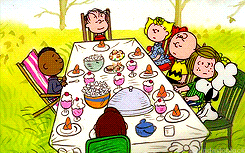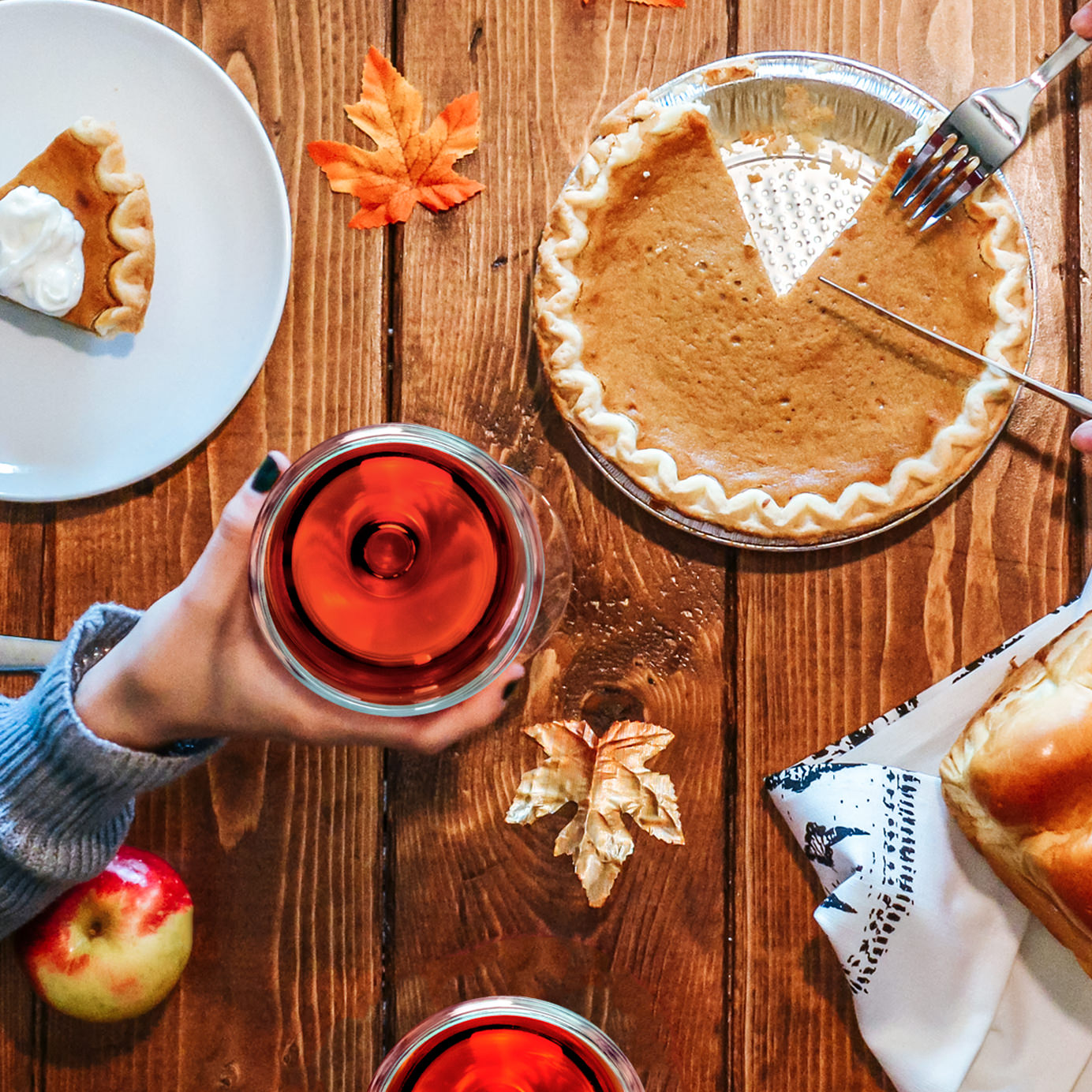It’s the kids’ table, all grown-up and a little bit defiant. ‘Tis the season of Friendsgiving.
A Pinterest– and Instagram-worthy event that brings non-relatives together for a Thanksgiving-adjacent feast, Friendsgiving has become the gravy of November. Everyone is doing it, which means Kylie Jenner already did it.
Ranging from a potluck of paper plates to a festive gathering worthy of Martha Stewart, Friendsgiving is on the rise. The phenomenon is inspiring tech product development, corporate branding campaigns, and, a few years back, a very-special episode of “The Real Housewives of New Jersey.”
In 2007, the earliest recorded usage of “Friendsgiving” appeared in posts on then-fledgling social network Twitter and also Usenet. These days, Friendsgiving is a lot of things to a lot of people, but it is especially popular among millennials.
“I’ve hosted a few Friendsgivings while in college, and have attended a handful since graduation,” Sarah Sloat, who matriculated in 2012, writes in a message. “I’m pro-Friendsgiving, but maybe that’s because I’m never the person making the turkey.”

As a secular holiday, Thanksgiving isn’t necessarily rooted in sacred tradition. There has always been room for a riff or two (we see you, Turducken and Piecaken). Friendsgiving honors most of the usual Thanksgiving components, such as roast turkey, cranberry sauce, red wine, and more wine. The only thing that’s different is family, or the lack thereof.
“As a Canadian that’s lived in New York for the past eight years, every Thanksgiving is Friendsgiving,” Yasmin Tayag, an editor at Inverse, writes in a message. In cities like NYC, “your friends pretty much are your family,” she adds. “Friendsgiving dinners have gotten more elaborate and better-tasting as my friends and I have gotten older and more put-together, but I have to say the best part is still the fact that we’re all generally on the same page, socially, politically, and culturally — no awkward family dramas here!”
For some, that’s precisely the appeal. Friendsgiving reclaims the holiday for people who live far from their families, and offers salvation for those who find forced family time about as much fun as a quarterly review. (See ya never, Uncle Steve.)
For many others, though, Friendsgiving supplements their family’s Thanksgiving. When Makalive45, whomever that may be, lobbed the term onto Urban Dictionary in 2009, he or she helpfully clarified that Friendsgiving typically occurs in tandem with a traditional Thanksgiving, not in lieu of it.
More young people live in or close to their parents’ homes than ever before. In 2016, a whopping 15 percent of people aged 25 to 35 dwelled with their parents, according to Pew Research, up from 12 percent in 2010. Friendsgiving provides ways for those without private living spaces to exert independence and maturity, replete with mashed potatoes. Dinner parties (sans mom and dad) signify adulthood in the popular imagination; consider a recent Washington Post video feature titled, “How to Adult: How to throw a dinner party.”
Given Pew’s data, Friendsgiving as a Thanksgiving add-on also makes sense. If you are among the 15 percent cohabitating with parents, you can hardly beg off family holidays by citing airfare woes during the worst travel time of the year.
Since its inception in the aughts, Friendsgiving has puttered along. While it may have been colloquial earlier, it slowly peppered blogs in following years, often appearing in quotes (“Friendsgiving”) as a loose concept. In 2011, it gained national prominence in a Bailey’s Irish Cream ad campaign.
From there, Friendsgiving went mainstream. Brands picked up the catchy concept and leveraged the catchy concept in advertising campaigns, ranging from Butterball to Whole Foods, Tyson Foods, and IKEA.
We took the bait. In 2015, over 75,000 Facebook events contained the word Friendsgiving. This year, the Venmo app — popular for splitting bills among friends— created a new, Friendsgiving-focused emoji.
“Over the last few years, Friendsgiving has grown in popularity,” Josh Criscoe, Venmo’s head of communications, wrote in an email. “There were more than 25,000 Friendsgiving payments on Venmo in November 2016, a 141 percent increase over November 2015.”
In partnership with Aldi, the wildly popular budget wine label, Venmo’s Friendsgiving emoji is a turkey hand, way cuter than the one you scribbled in second grade. It donates 10 meals to Feeding America each time it’s shared — which, aww.
Friendsgiving events are popping up now (as in right now, the week leading up to Thanksgiving, so as to catch everyone while they’re still in town). Despite the fact that the event itself is a bit of a rule breaker, there is plenty of chatter on the Internet about the best ways to plan Friendsgiving, the best Friendsgiving dishes to share — or even the 10 Friendsgiving commandments to follow.
Of course, there is no wrong way to to celebrate new traditions, especially those that sends the message that friends are as good as family. In this post-familial age, chosen families sometimes come first.
It’s hardly a new story. In 1973’s “A Charlie Brown Thanksgiving,” Peppermint Patty invites herself to Charlie Brown’s house for the holiday. Already expected at his grandmother’s house but unable to say no, Charlie Brown waffles. Peppermint Patty doubles down and invites Marcie and Franklin to Charlie Brown’s house.

Enter Linus, the sage, with a solution: “You simply have two dinners.” Charlie Brown’s friends-only dinner was arguably the first Friendsgiving, decades before the term existed. It consisted of buttered toast and jelly beans, but it still ended with cheers.
At the end of the day, Friendsgiving 2017 is much the same: Friends give us all the more reason to be thankful. It’s good, old-fashioned gratitude — good grief!
